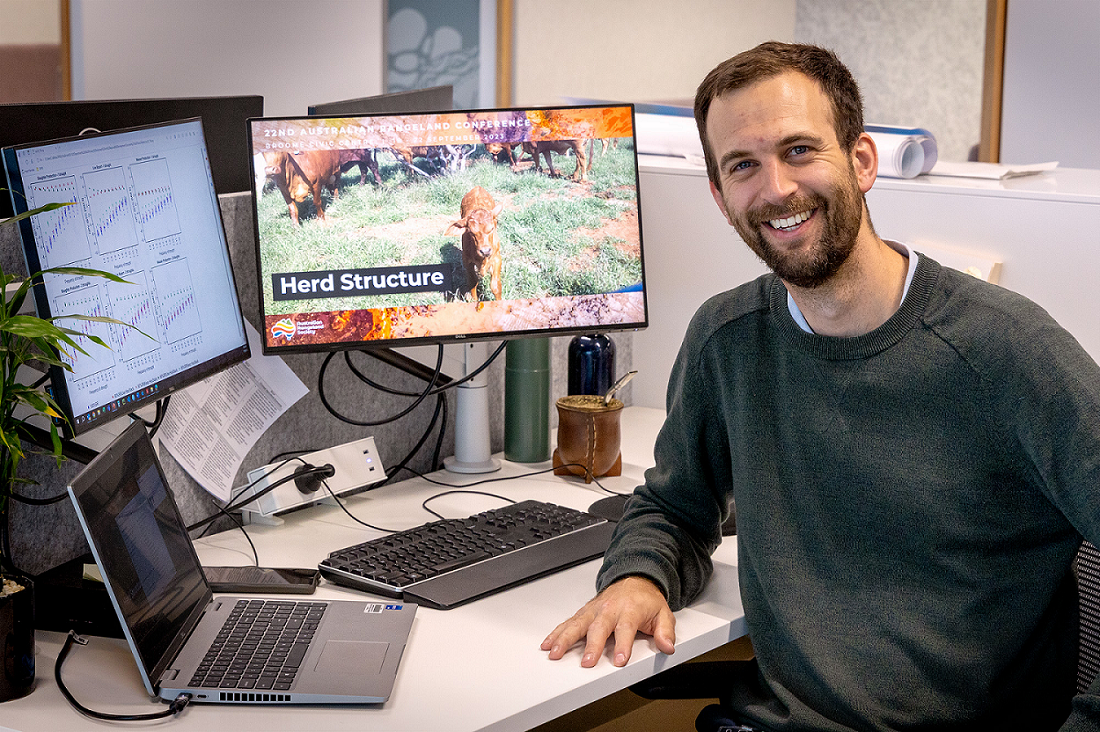Bio-economic modelling by the Department of Primary Industries and Regional Development (DPIRD) shows turning off 500-560 kilogram slaughter steers and heifers at a low stocking rate was the most environmentally and financially beneficial production system.
Research scientist Christophe d’Abbadie said the system was underpinned by a more conservative stocking rate that results in a more stable herd and net income – particularly in drought years.
“The slaughter production scenario produced more kilograms of beef at an equivalent grazing pressure and recovered faster from drought compared with systems targeting weaner production and live export,” Mr d’Abbadie said.
“The success of the slaughter production scenario is based on a stocking rate of 66 per cent of the recommended stocking rate and rigorous control over all other forms of grazing pressure.
“This allows for residual palatable rangeland vegetation to build up – termed as ‘haystacks’ – providing critical feed during drought.
“This strategy could not only improve rangeland condition over time, it could also produce lower methane emission intensity per kilograms of meat produced in comparison to the other modelled scenarios.”
The study concluded the conservative stocking could create market opportunities for better quality cattle during protracted drought events, as well as avoid forced selling during drought and buying-in at inflated prices during recovery.
The scenario may, in time, also offer opportunities for extra income from carbon sequestration of rangeland vegetation and improvements in biodiversity, which could help producers transition to the strategy.
“Given forecasts for more frequent extreme drought events in the Southern Rangelands in coming decades, this strategy makes good business sense,” Mr d’Abbadie said.
“Importantly, the strategy will help preserve the rangeland condition in times of drought and support graziers social licence to operate.”



